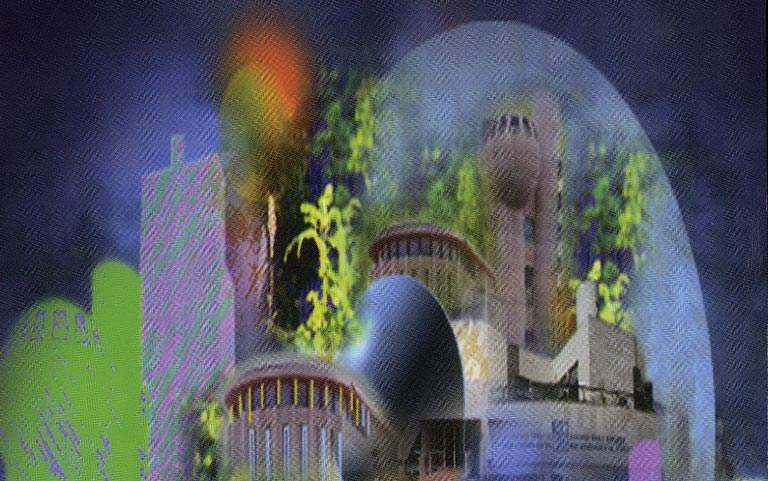- Unknown particle reveals its identity
- Why the scatter matters
- When particles collide
- Deep, inelastic and important
- The threshold test
- From the bottom to the top
- Tohu-vevohu: confusion and chaos
- All in the family
- A new theory of beta decay
- Discovery of the gluon
- The three neutrino families
- International effort to reveal the missing link
- The next generation of radiation detectors
- The first moments of the universe
- A clearer image for particle detectors
- When particles go for a spin
- A theory within a theory
- The two-dimensional link
Unknown particle reveals its identity
Using particle detectors based on photographic emulsions, Weizmann Institute scientists identified a particle with unknown and unanticipated properties. For some ten years this event remained an enigma, but when the omega-minus particle was discovered elsewhere, it became clear that this was the mysterious particle which had left its imprint on the Institute's detector. The discovery of this particle confirmed the "eightfold way" theory. This theory states that elementary particles appear only in certain "families" that can possess specific (integer) "strangeness" numbers, and are either neutral or have an integer electric charge between -2 and +2 units of the electron charge.
Why the scatter matters
Weizmann Institute scientists studying the phenomenon of duality in the physics of hadron particles (particles such as protons, neutrons and pions that react strongly with each other) have developed a formula describing how these particles scatter after they have collided with each other. This includes instances where the scattering particles differ from the original particles which collided. This specific formula gave impetus to understanding the entire scattering process.
When particles collide
Weizmann Institute scientists were the first to demonstrate, using diagrams, the phenomenon of duality (the possibility of describing in two ways how particles scatter after collision). One description is based on the trajectories of the particles entering the collision zone, while the second is based on the trajectory of one particle entering the collision zone and that of one particle exiting (in fact, being ejected) from it.
The diagram-based demonstration of this phenomenon helped scientists worldwide to understand the processes of scatter that take place when interactive particles collide. Such collisions are carried out in particle accelerators in order to learn about the structure of matter.
Deep, inelastic and important
Deep, inelastic scattering occurs in collisions between a beam of lepton particles (such as electrons) and hadron particles (such as protons and neutrons). Weizmann Institute scientists used components of field theory to gain an understanding of these processes, which led to discoveries about the internal structure of the hadron with which a lepton beam collides. This approach provided experimental confirmation that hadrons contain elementary particles, called quarks, and proposed the "light-cone" expansion for products of the multiplication of weak and electromagnetic currents. A weak current is a flow of particles carrying charges of the weak force. Such currents play an important role in theoretical expressions of the scattering processes of colliding particles.
This understanding of deep, inelastic scattering made a major contribution to research into the fundamental structure of matter being carried out at a number of particle accelerators worldwide.
At a later stage, the energy and momentum of hadron particles was expressed using products of currents of non-Abelian groups. These expressions are used today in conformal field theory and string theory studies.
The threshold test
Weizmann Institute scientists contributed to the development of a method for evaluating proposed models for the structure of matter. This method, based on the anomaly equations which describe the relationship between the properties of currents of the electromagnetic force and the weak force, is a key scientific tool in this field. Proposed models are rejected if they fail to pass the threshold of the Institute's evaluation method; however, crossing this threshold does not guarantee that a proposed model is correct and additional analysis is required.
From the bottom to the top
The most elementary particles of matter are quarks (which make up the atomic nucleus) and leptons (the best known being the electron). In 1975, scientists knew of only four types of quarks and four kinds of leptons. A Weizmann Institute physicist suggested that six kinds of each must exist to explain various natural phenomena that had been discovered. He gave names to the two extra quarks: the fifth (or bottom) and sixth (or top). They were discovered experimentally in 1977 and 1994, respectively.
The six quarks and six leptons have an important role in understanding the creation of the universe and in cosmology. In 1988, the Weizmann scientist suggested that the sixth lepton (the neutrino) plays an important role in shaping the structure of the universe, and may also make up much of the dark matter which fills the cosmos. This hypothesis is now being investigated in an experiment at the European Laboratory for Particle Physics (CERN), near Geneva.

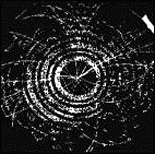
Tohu-vevohu: confusion and chaos
Physicists generally strive for maximum simplicity. For example, they attempt to see the considerable range of particles of matter as different aspects or different combinations of a few elementary particles. According to the standard model of the structure of matter, particles are divided into two main classes: six leptons (the electron, its cousins, and the neutrinos) and six quarks, between which various force-carrying particles move.
A Weizmann Institute scientist put forward a theory which simplifies this complex situation. According to his theory, quarks and leptons are not, strictly speaking, elementary particles because they contain particles even more elementary than themselves, called rishons. According to this theory, all the particles known to us today are different combinations of just two kinds of particles, called tohu and vohu. These stem from the Biblical Hebrew-language term "tohu-vevohu," which means "confusion and chaos."
All in the family
Weizmann Institute scientists applied the mathematical method of group theory to test the classification of the elementary particles of nature in families, and to show that they were made of smaller building blocks called quarks; this was at a time when the existence of families and quarks was highly controversial. This work made the Weizmann Institute a center for the new physics of the 1960s.
A new theory of beta decay
Weizmann Institute scientists developed a method for measuring the polarization of electrons emitted in radioactive beta decay. At that time, physics was in turmoil over the discovery of parity violation. The results, showing that beta decay electrons were spinning like left-handed screws, were taken together with similar results obtained from other radioactive isotopes to establish the new theory of beta decay, now called the standard model.
Discovery of the gluon
Gluons are the particles responsible for the strongest force in nature: the force which holds the nucleus of the atom together. This force acts between quarks, which are the elementary particles that make up the protons and neutrons in the nucleus. When two quarks exchange a gluon between them, the fundamental property of the gluon, its color, is acting between them.
Color possesses an unusual property: The greater the distance between the particles it is acting upon, the stronger it becomes. (This is unlike other forces which become weaker as the bodies between them, upon which they are acting, are drawn further apart.)
This property of color makes it impossible to isolate one quark from another because, the more they are separated, the stronger grows the gluonic force operating between them. And if quarks remain trapped in protons or neutrons, the gluons moving within them will also not be able to escape.
The physicists who wanted to prove the existence of gluons had to go back to the moment at which these particles were created, i.e., before they became trapped in protons or neutrons. This was one of the reasons behind the design of the PETRA particle accelerator at the Deutsches Elektronen Synchrotron (DESY) laboratory in Hamburg. This accelerator creates collisions between beams of electrons and positrons. (A positron is an anti-electron, which means it is the same as an electron, except that it has a positive instead of a negative electrical charge.)
When the particle collides with its anti-particle, both are converted into energy. (This is an illustration of Albert Einstein's equation in which mass is equivalent to energy.) Very shortly afterwards and within fractions of a second, energy turns back into matter (according to the same equation). However, out of this energy there may be created many different particles, such as quarks and gluons. These quarks and gluons immediately become inseparable, but in the split second before this takes place, they are unattached. It was in this split second that the researchers managed to measure them and study their properties.
Weizmann Institute scientists made important contributions to the development of the DESY particle detectors ZEUS and TASSO, the latter of which was used for the above experiment that provided the first evidence of the existence of the gluon.
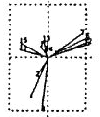
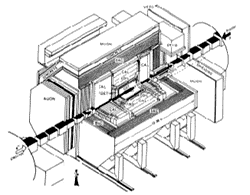
The three neutrino families
Physicists from the Weizmann Institute took part in research which led to the conclusion that there are only three families of neutrino particles. This discovery considerably advanced our knowledge of the differentiation of the elementary particles. These studies were carried out using the world's largest particle accelerator, the Large Electron-Positron collider (LEP) of the European Laboratory for Particle Physics (CERN) near Geneva.
International effort to reveal the missing link
The Higgs boson, which appears to be responsible for providing the mass of most of the particles in the universe, is the last part of the jigsaw puzzle which should show that two natural forces (the weak force and the electromagnetic force) are simply different aspects of the same natural force, called the electroweak force.
This research to capture the Higgs boson is being carried out at LEP, located at CERN near Geneva. This accelerator is installed in a circular tunnel, 27 kilometers (17 miles) long, excavated 100 meters (110 yards) below the surface. Weizmann Institute scientists are contributing to the work at CERN, under a scientific cooperation agreement with the Israeli government.
In order to discover and identify the Higgs boson, the researchers want to study all the particles created by the disintegration of the Z boson (one of the particles that carries the weak nuclear force). For this purpose, Weizmann scientists, in conjunction with researchers from other research establishments, designed, developed and constructed the thinnest gas particle detector in the world. The detector is made of 400 thin, trapezoid plates containing taut, gold-coated tungsten wires which create the necessary electrical field.
In the first decade of the third millennium, CERN scientists are planning to install an additional particle accelerator in their circular tunnel. This new accelerator will be able to generate particle collisions at far greater intensities than the current accelerator. The hope is that the higher-energy collisions will finally reveal the Higgs boson. This accelerator is based on superconducting electromagnets which operate at very low temperatures (-271°C or -456°F). To detect the particles created in this accelerator, Weizmann scientists have designed the world's most advanced detectors of their kind. They are being manufactured in Israel and Japan, under the supervision of Institute physicists.
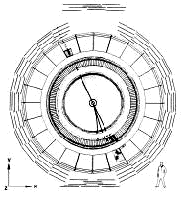
The next generation of radiation detectors
One of the weaknesses in scientific experiments and numerous medical applications is the need to expose photographic film to radiation emitted by various radioactive isotopes, or to X-rays in medical examinations and for security purposes. Because of the low sensitivity of photographic film, in many cases it is necessary to expose the film to radiation for extended periods to obtain clear-cut results.
Now Weizmann Institute scientists have developed radiation detectors that are intended to replace photographic film in a wide range of applications. The innovative detector should considerably shorten exposure times, thereby making experiments and treatments far more efficient. The detector identifies and charts beta radiation particles (electrons), which are emitted by radioactive isotopes bound to various biological molecules (for example, in biological or medical research). The chart is sent to the computer in a digitized form, so that the picture can be generated and much of the decryption carried out simultaneously.
Exposure times are a matter of minutes and the new detector can display tens of thousands of gray tones (compared with hundreds of light gradations in photographic film). The system can display the resulting picture at different brightness levels to enable researchers, without changing exposures, to scrutinize both very light and very dark details. One possible application is in the advanced identification technique known as genetic fingerprinting.
In another detector developed by the same research team, in addition to electron amplification, photons (light particles) are emitted. The system absorbs the points of light and then, by means of a digitizer, transfers the resulting picture straight to a computer. A third detector is capable of charting electrons emitted by thin radiation converter plates bombarded by X-rays. This detector could be used for high-speed medical imaging, avoiding risky exposure to radiation for both patient and doctor. Such detectors will also be suitable for high-speed visualization operations of the insides of containers, suitcases, vehicles, and so on, for customs inspections and security purposes. Other Weizmann detectors use neutrons to see through very large objects, such as an entire aircraft.
The same team also developed detectors which operate like superfast cameras capable of photographing light at speeds of around one million pictures per second, as well as detectors capable of identifying atoms of lightweight elements like beryllium, boron, oxygen, nitrogen, carbon and others. These detectors are very useful when carrying out surface analyses, a very important procedure in materials science.
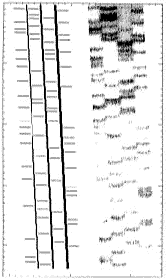
The first moments of the universe
In the first millionth of a second after the creation of the universe in the "Big Bang," there were no atoms of matter as we know them today. In fact, even the particles the atomic nucleus is made of, protons and neutrons, hadn't yet been born. Instead, the matter streaming out in all directions from the initial center of the universe consisted of the most fundamental particles of matter, known to physicists as quarks and gluons. These particles had "chiral symmetry," a property associated with symmetry under reflection, implying that they were massless. This phase of matter, called "quark-gluon plasma," lasted only a split second. It was followed by a "phase transition" during which the particles gained mass, chiral symmetry was lost, and the quarks and gluons combined into the elementary particles we know today, namely protons, neutrons, etc., into which the quarks and gluons are confined.
An international group, which originally consisted of a team from the Weizmann Institute and the University of Heidelberg (which now includes about 40 scientists from seven institutions), has come close to recreating this earliest form of unconfined matter as it existed in the first millionth of a second after the Big Bang. The experiment, named CERES, is being carried out at the SPS particle accelerator of the European Laboratory for Particle Physics (CERN) near Geneva. The research involved directing beams of sulfur nuclei and, later, lead nuclei, moving very close to the speed of light, at a thin gold foil target. The resulting collisions converted a large fraction of the energy of the beam particles into the internal energy of the colliding nuclei, creating for a split second a tiny "fireball" of matter of extreme temperature (a thousand times the temperature in the center of the sun). Perhaps, for a brief moment, the conditions of the universe during the "quark-gluon plasma" phase were recreated.
A major factor that led to the successful outcome of the CERES experiment was the use of a highly original detection scheme based on novel detectors, RICH (Ring Imaging Cherenkov) and silicon drift detectors, which are able to identify and evaluate very rare electron-positron pairs emitted during this phase. Indeed, the properties of electron pairs detected in the CERES detector can be explained by assuming that some of the particles briefly "lost" a substantial part of their mass, indicating that chiral symmetry may have been partially restored in the collisions, as would be expected if conditions close to "deconfined quark-gluon plasma" had been achieved for the brief moment of the collision. One of the indications of the great importance of these results is the very large number of theoretical papers which have been published since then, in an attempt to interpret these findings.
A clearer image for particle detectors
Weizmann Institute scientists have developed a microspherical plate, which should considerably improve the effectiveness of particle detectors used to study molecular structures and a range of chemical reactions. One possible application of these particle detectors could be in detecting and measuring particles scattered after a crystal is bombarded with X-rays, for example, to reveal the spatial structure of the molecules inside. The detectors could also be used in a scanning electron microscope, in particle imaging, spectroscopy, and ultraviolet radiation imaging.
The problem in all of these systems is that they provide a very weak picture, which means that it must be enhanced. However, existing image boosters need a very high vacuum to function, which increases the cost of the operation. The advantage of the device developed by the Institute's scientists is that it can be produced with large surface areas, which produce large pictures. And it can be operated in less limiting vacuum conditions.
When particles go for a spin
Subatomic particles of matter have a property known as spin. For example, an electron in a magnetic field can have a clockwise or counterclockwise spin, which are different energy conditions depending on whether the axis of the spin follows or opposes the direction of the magnetic field.
Weizmann Institute scientists developed a method for studying the difference between these two energy conditions (which is important in semiconducting materials). This method is based on repeating measurements at extremely short time intervals. When the electron is placed in a situation where there is a mix of two directions of spin, the electron oscillates between the two conditions and produces a cyclical signal known as quantum beats. The method enables researchers to measure the oscillation cycle with greater accuracy, thereby enabling them to draw conclusions about the energy difference between the two directions of spin.
A theory within a theory
Weizmann Institute scientists were the first to develop a consistent, non-trivial string theory about the curvature of space. String theories propose converting all conventional particles of matter, which have no dimensions (in other words, they exist as points) into a one-dimensional particle - a string. According to these theories, all particles of matter in the universe are a result of the vibration of these strings. String theories also propose a way of combining the theory of relativity and quantum theory. Both have been demonstrated separately in numerous experiments but they have never been reconciled.
The main difficulty with string theories is that they can only exist in a universe which has many dimensions (around ten) while the universe with which we are familiar has only four dimensions (the three dimensions of space, and that of time). Physicists investigating string theories try to show that the surplus dimensions (those which we cannot perceive) really do exist, but are folded up in such a way that they are not felt in any practical sense.
The question is: Do string theories actually describe how the universe really works? If so, then the theory must, among other things, allow for the existence of the standard model, which is the conventional theory about the structure of matter. The first non-trivial consistent string theory (in curved space), developed by the Institute's scientists, failed this test. But in their later work they developed a string theory that incorporates the possibility of the standard model.
The two-dimensional link
The Institute's scientists found a new link between two different two-dimensional string theories (conformal field theories and models of magnets). The link describes, and makes it possible to predict, the conditions and processes that take place at various critical points in nature (such as phase transitions, which are shifts from one state to another). Although the link was discovered in a two-dimensional system, it makes it possible to carry out in-depth investigations into phenomena which are difficult to study in three-dimensional systems.


















